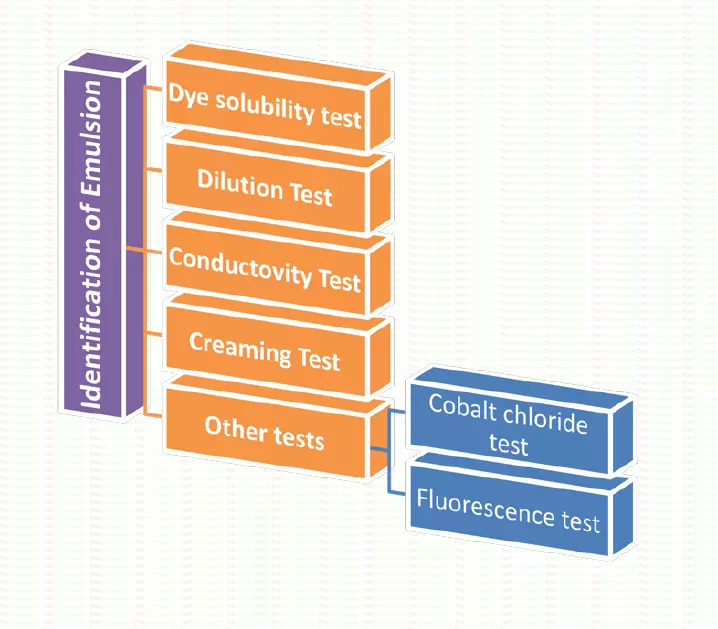Identification of emulsion is done by following methods
;

1. Dye Solubility test:
- Water-soluble dye -Amaranth and Methylene blue-form uniform tint in O/W emulsion.
- Sudan III & Scarlet Red (oil-soluble dye)-form uniform tint in W/O emulsion.
2. Dilution test
- When a dispersion medium (i.E. External/continuous phase) is added to an emulsion, NO phase separation occurs.
- When water is added to O/W emulsion- no phase separation; if the oil is added to O/W emulsion- phase separation takes place.
- When the oil is added to W/O emulsion- no phase separation occurs; if the water is added to O/W emulsion- phase separation takes place.
3. Conductivity test
This test is based on the ability of water to conduct electricity. If water is the continuous phase (i.e. O/W), then the emulsion conduct electricity. if oil is the continuous phase (i.e W/O emulsion), the emulsion fails to conduct electricity.
4. Creaming test

- (direction of creaming upward or downward)
- W/O emulsion: normally cream downwards as well is usually less dense than water
- O/W emulsion: normally cream upwards
5. Other tests:
- Cobalt chloride test filter paper test (blue to pink, indicating that the emulsion is o/w type.) &
- Fluorescence test (fluorescence under microscope, then it is w/o type and if it shows only spotty fluorescence, then it is o/w type)
Also, Read…
Type of Pharmaceutical Emulsion
Physical Instability of Emulsion


Comments are closed